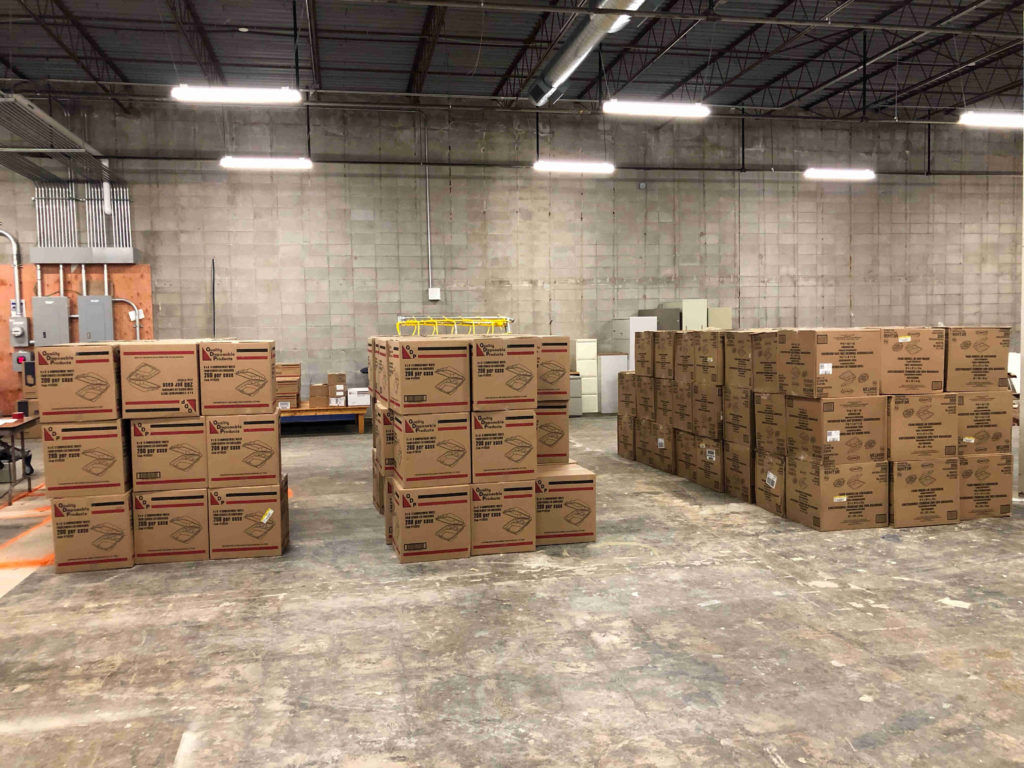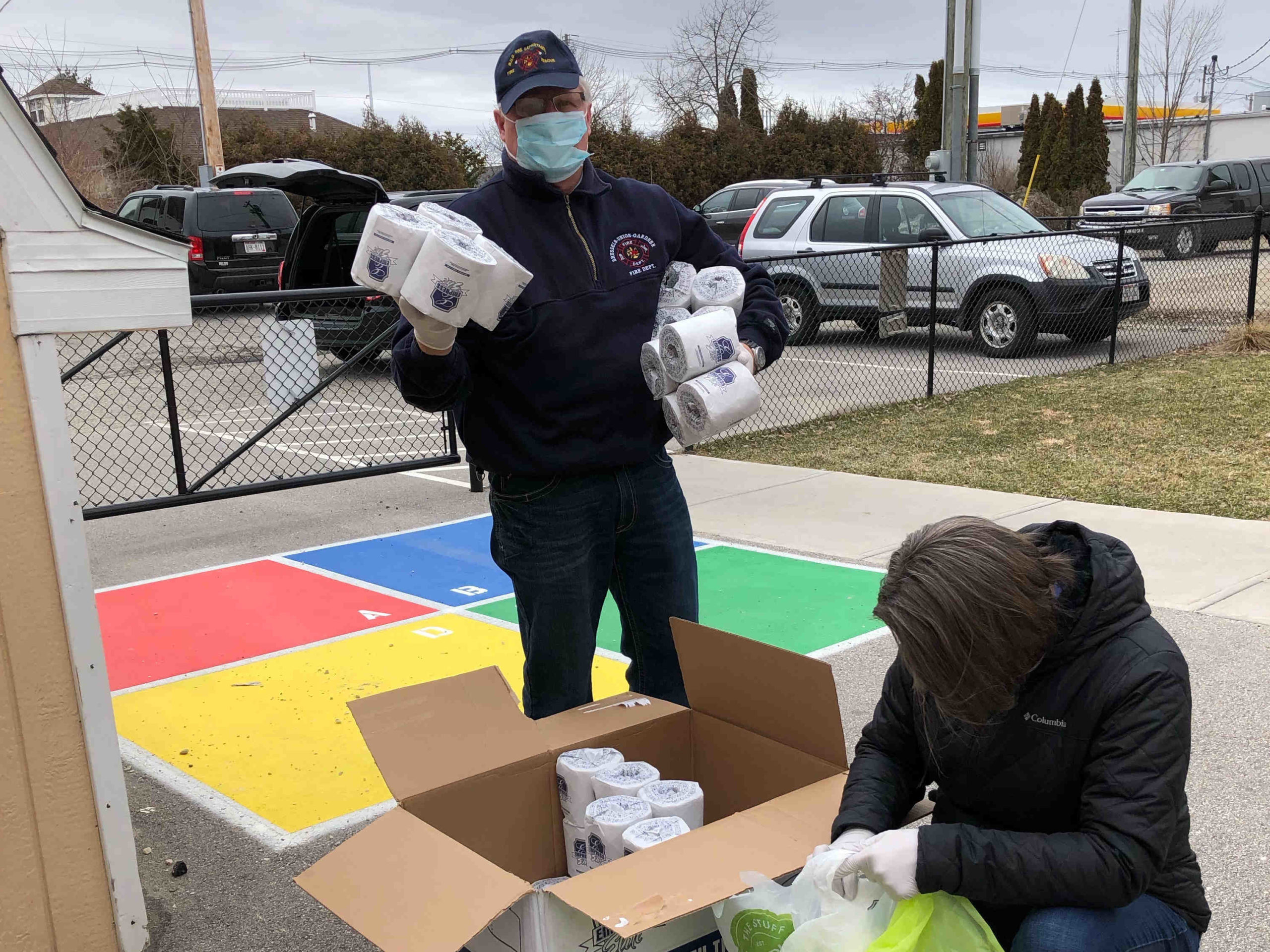Food insecurity is still a prevalent issue in Door County more than a year into the pandemic, local assistance organization leaders said.
Since Covid-19 reached the peninsula in March 2020, Door County has seen an increase in the number of residents experiencing food insecurity as a result of financial instability. That need has continued this year.
In recent weeks, there has been a “small uptick” in the need for food assistance in Sturgeon Bay, and a greater increase in northern Door County, said Amy Kohnle, executive director of United Way of Door County, which has been working closely with local food pantries. (Disclosure: Kohnle is also a donor to Knock.)
“We don’t want anyone going hungry in our county,” Kohnle said. “There is truly no shame in going to a food pantry.”
There has been a similar increase in demand in the senior community, including a very recent increase in participation in the county Aging and Disability Resource Center (ADRC) nutrition program, said Jake Erickson, the ADRC’s director.
“People assume Door County is just ‘vacationland.’ That is obviously untrue,” Erickson said. “We (the ADRC) do run into situations where folks are not only struggling to pay for food but other living costs as well – and this was happening well before the pandemic.”
Before the pandemic, a 2019 Community Health Needs Assessment by the Door County Medical Center found a food insecurity rate among families of 11.8-12.4 percent.
“Access to adequate, appropriate and safe food and nutrition continues to be a challenge for many in Door County,” the assessment reads. “Food cost disparity continues to be high in the community, combined with the fact that Door County’s average annual income is lower than the state average and many families struggle with seasonal employment, makes food security a perennial issue in the community.”

School efforts continue
In addition to seniors, children are also a very vulnerable population with regards to food insecurity.
Before the pandemic, the food insecurity rate for Door County children was 23.2 percent, according to the Medical Center assessment from 2019. The state rate at that time was 20.7 percent, according to the assessment.
Door County schools have been making ongoing efforts to provide accessible and affordable/free meals to students.
“By the middle of last school year, more students participated in school breakfast and school lunch than in past school years,” said Jenny Spude, the Sturgeon Bay School District’s food service director. This prompted the district to continue to supply free meals to students in the 2021-22 school year.
“Students are offered breakfast as they walk into the school building and eat in their classrooms or cafeteria,” Spude said. “Lunches for our youngest learners will be delivered to their classroom as they eat with their classmates while older students will be eating in their school cafeteria while we stagger meal times to align with small groups of eaters.”
Other schools in Door County have taken similar actions. Gibraltar Area Schools in 2020-21 provided a free lunch service organized by the food service staff and bus drivers. Buses would be stationed at multiple locations throughout Northern Door at which students could pick up free lunches. For the 2021-22 school year, Gibraltar Area Schools is offering a reimbursable meal program that allows students one free breakfast and one free lunch daily if they choose food items that meet National School Lunch Program guidelines.
Spude said the Sturgeon Bay district realized it needed to respond quickly to families’ needs when the pandemic hit.
“When we had strong indications that school could perhaps be closing for a few days/weeks we wanted to be sure to send students home with upcoming breakfasts and lunches for the near future,” Spude said. “This was also a support for us as we already had food ordered and a great percentage of it already received for the remainder of the school year. If we hadn’t figured out a distribution plan we would have wasted food intended for our students.”
At Sturgeon Bay schools, it was all hands on deck to assemble and distribute free meals for students in anticipation of students being sent home.
“Food service, administration and teaching staff worked alongside current study hall students and recent graduates home already for spring break to assemble meals for students,” Spude said. “On dismissal day all students throughout the district were offered meals to take home.”

Providers reflect on county efforts during initial shutdown
As economic needs grew during the pandemic, local organizations rose to meet the needs of struggling Door County residents. One such organization was the Door County Meals Co-op, founded by organizer Adam Peronto.
“(The co-op) was a group that came together right at the onset of Covid-19, in particular when the shutdown happened,” Peronto said. “We knew that food insecurity was going to be an issue in our community.”
“We had kids, seniors, but we had to wonder, ‘What about the broader community? What’s out there for them?’ and there really wasn’t anything,” Peronto added.
Peronto said that for 10 weeks, the Meals Co-op served 800 meals per night on weeknights in Door and Kewaunee counties. Despite the large amount of food being provided by the program, the need for food assistance was even greater, Peronto said.
“We were regularly out of meals,” Peronto said. “The first week we averaged 23 cars per day we had to turn away because we didn’t have enough food.”
The variety of people brought in by the program was indicative of the need for food assistance in the community.
“We saw everything,” Peronto said. “We were serving 35 percent under the age of 18. We had a large Hispanic population that was coming and getting meals, we had single mothers with kids coming for meals, we had almost every walk of life that you could think of.”
Peronto said he was surprised by some of the occupations of the people the co-op was serving, including medical workers who were working around the clock.
“Some of the populations we were reaching I didn’t expect,” Peronto said. “I spoke with an artist in town who had lost all his gigs and wasn’t able to sell any of his work and he was starving. He was so humble he didn’t want to reach out to a free meal line, but he realized he had to. We were getting people in the lower income bracket but also people whose jobs weren’t around anymore and who needed to eat.”

